هل من الآمن تكديس البطاريات?
عندما تخطط لنظام تخزين الطاقة, خاصة في بيئة واعية للفضاء مثل العديد من المنازل والشركات في سنغافورة, يبدو التراص الرأسي وسيلة منطقية لتوفير المساحة. ولكن هل من الآمن بالفعل تكديس وحدات البطارية القوية هذه? هذا سؤال حاسم, والإجابة هي شركة وشرطية "نعم."
من الآمن فقط تكديس البطاريات إذا كانت مصممة على وجه التحديد ومعتمدة لهذا الغرض. تم تصميم أنظمة تخزين البطارية الحديثة القابلة للتكديس مع الاستقرار الميكانيكي, السلامة الكهربائية, والإدارة الحرارية في الاعتبار. تراكب البطاريات غير المصممة لتكديس بشكل تعسفي أمر خطير للغاية ويمكن أن يؤدي إلى دوائر قصيرة, ارتفاع درجة الحرارة, عدم الاستقرار, والنار. الحلول المهنية هي المفتاح.
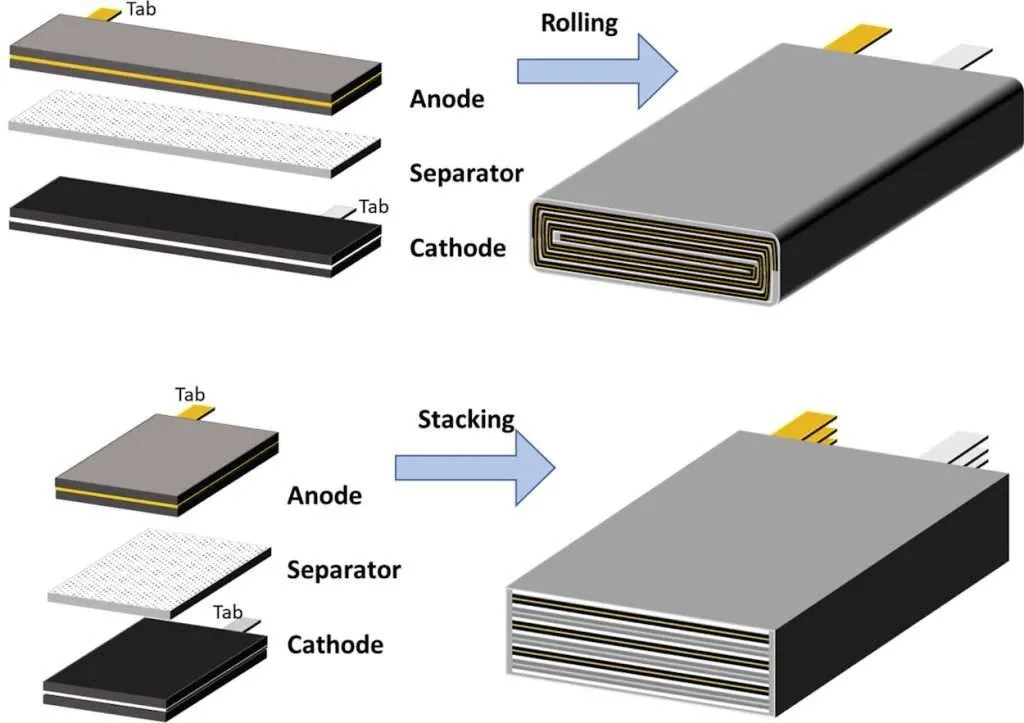
في جيكس سولار, السلامة هي أساس كل نظام نقوم بتصميمه. ال بطارية قابلة للتكديس يتم اختيار المنتجات التي نستخدمها خصيصًا لميزات السلامة الخاصة بهم ويتم تثبيتها وفقًا للمعايير الصارمة. دعنا نتعمق أكثر في الميكانيكا, فوائد, وبروتوكولات السلامة لتكديس البطاريات.
ماذا تفعل بطاريات تكديس?
لماذا يتم تصميم حلول تخزين الطاقة الحديثة غالبًا على أنها "قابلة للتكديس" الأنظمة? ما هي الوظيفة الفعلية والفائدة من هذا النهج المعياري? تكديس البطاريات يدور حول تحقيق قابلية التوسع والكفاءة في تصميم تخزين الطاقة الخاص بك.
"تكديس" تتيح لك وحدات البطارية المصممة بناء أكبر, نظام تخزين الطاقة المخصص من لبنات البناء الموحدة. كهربائيا, هذا يعني أنه يمكنك توصيل الوحدات في بالتوازي لزيادة إجمالي قدرتك على الطاقة (في KWH) والإخراج الحالي, أو في سلسلة لزيادة الجهد الكلي للنظام. جسديا, يسمح بتنظيمها للغاية, فعال الفضاء, وتركيب كثيف, وهي ميزة كبيرة في المنازل أو الأعمال التجارية المقيدة للفضاء.
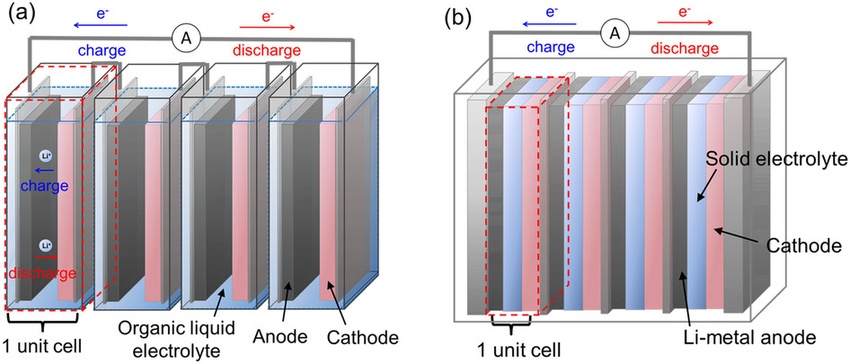
الغوص أعمق: الغرض من النهج المعياري
الوظائف الأساسية لنظام البطارية القابل للتكديس:
- قابلية التوسع: هذه هي الفائدة الأساسية. يمكنك البدء بسعة تلبي احتياجاتك الحالية وميزانيتك, ثم إضافة المزيد من الوحدات المتطابقة بسهولة في وقت لاحق إذا زاد استهلاك الطاقة الخاص بك (على سبيل المثال, إذا اشتريت سيارة كهربائية). هذا "الدفع كأنك" النموذج مرن واقتصادي على حد سواء.
- التخصيص: يسمح لنا كمصممين للنظام بإنشاء بنك بطاري, بدلاً من أن تقتصر على أحد الأحجام الثابتة أو اثنين.
- كفاءة الفضاء: عن طريق تكديس عموديا, إما مباشرة (إذا تم تصميمه لذلك) أو داخل خزانة احترافية أو رف 19 بوصة, يمكنك وضع كمية كبيرة من تخزين الطاقة في بصمة صغيرة جدًا. هذا لا يقدر بثمن في الشقق, الشقق, أو الشركات التي تكون فيها المساحة علاوة.
- سهولة التثبيت والخدمة: يمكن للوحدات الموحدة ذات الموصلات المصممة لهذا الغرض تبسيط عملية التثبيت. إذا كان لدى وحدة واحدة أن يكون لها إصدار سنوات أسفل الخط, غالبًا ما يتم خدمتها أو استبدالها دون الحاجة إلى إيقاف تشغيل بنك البطارية بأكمله.
بالنسبة لمعظم الأنظمة السكنية والتجارية GYCX, نستخدم التراص لموازي 48V LFP1. (الفوسفات الحديد الليثيوم) وحدات, بناء كمية مثالية من التخزين KWH للإقران مع المصفوفات الشمسية لعملائنا.
هل تكديس البطاريات يزيد من الجهد؟?
هذا سؤال كهربائي مشترك. هل الفعل المادي لوضع البطاريات على رأس آخر يزيد تلقائيًا من جهد النظام?
لا, بطاريات تكديس جسديا لا تزيد بطبيعتها الجهد. يتم تحديد جهد بنك البطارية من خلال كيفية وجود الوحدات النمطية سلكية كهربائيا معا. لزيادة الجهد, يجب عليك توصيل الوحدات في مسلسل. إذا قمت بتوصيلهم في موازي, وهو أكثر شيوعًا لزيادة سعة التخزين الشمسي, يبقى الجهد كما هو, لكن القدرة (في ساعات أمبير أو آه) يزيد.
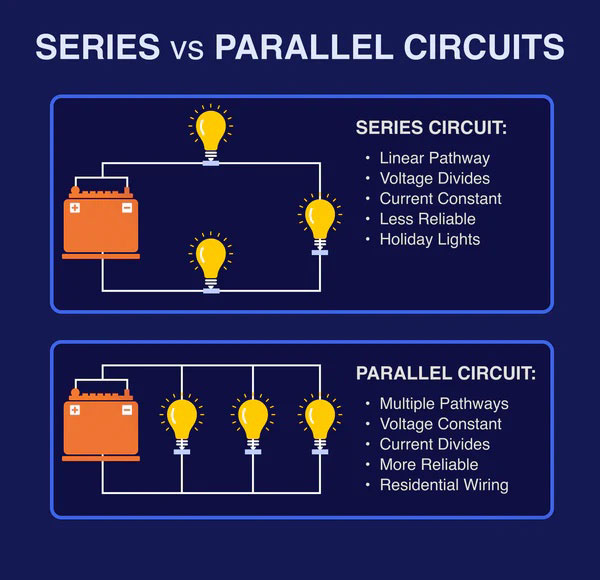
الغوص أعمق: الواقع الكهربائي للتكديس
دعنا نوضح نوعي الاتصال الأساسيين:
- اتصال سلسلة (لزيادة الجهد):
- تقوم بتوصيل الإيجابية (+) محطة البطارية الأولى إلى السلبية (-) محطة الثانية, وهكذا, إنشاء سلسلة.
- الجهد الكلي هو مجموع الفولتية للبطارية الفردية. (على سبيل المثال, وحدتان 48 فولت في سلسلة = نظام 96 فولت).
- إجمالي أمبير ساعة (آه) تبقى السعة في وحدة واحدة.
- اتصال مواز (لزيادة القدرة):
- يمكنك توصيل كل الإيجابية (+) المحطات معًا وكل السلبية (-) المحطات معا.
- لا يزال الجهد الكلي هو نفسه وحدة واحدة (على سبيل المثال, توصيل وحدتي 48 فولت بالتوازي يؤدي إلى نظام 48 فولت).
- إجمالي أمبير ساعة (آه) القدرة هي مجموع قدرات الوحدة النمطية الفردية (على سبيل المثال, وحدتان 100AH بالتوازي = بنك 200AH).
بالنسبة لمعظم أنظمة تخزين الطاقة الشمسية الحديثة, مثل بطارية قابلة للتكديس الحلول التي يوفرها GYCX Solar, الهدف هو بناء بنك 48 فولت عالي السعة. لذلك, نرتكز على الوحدات النمطية 48 فولت فعليًا في رف ونقوم بتوصيلها كهربائيًا بالتوازي لتحقيق إجمالي كيلو وات ساعة مرغوب فيه.
هل تدوم بطاريات مكدس الطاقة لفترة أطول?
هذا سؤال ممتاز وثاقبة. هل إنشاء "مكدس طاقة أكبر" عن طريق إضافة المزيد من البطاريات ، تجعل النظام يدوم لفترة أطول من حيث السنوات والدورات? الجواب هو دقيق وقوي "نعم."
في حين أن وحدات البطارية الفردية لها نفس العمر الجوهري, أ أكبر, يمكن أن يستمر نظام البطارية المكدسة بحجم صحيح بشكل صحيح لفترة أطول بكثير من واحد أصغر يعمل على تشغيل نفس الأحمال. وذلك لأن العمل اليومي مشترك عبر المزيد من الخلايا, يؤدي إلى دورات التفريغ الضحلة لكل وحدة. بطارية يتم تفريغها فقط 30% كل يوم سوف يتحمل دورات أكثر بكثير من البطارية التي يتم تفريغها 80% كل يوم. لذلك, عن طريق تقليل الإجهاد اليومي على كل بطارية, تم تمديد الحياة التشغيلية للنظام بأكمله.
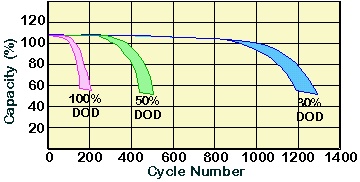
الغوص أعمق: مكافأة طول طول التوسع
دعونا نستخدم القياس. تخيل الاضطرار إلى حمل 40 كجم من محلات البقالة. إذا كان شخص واحد يفعل ذلك, إنها سلالة ثقيلة. إذا شارك شخصان الحمل (20كلغ لكل), الضغط على كل شخص أقل بكثير. تعمل البطاريات بطريقة مماثلة.
- دورة الحياة مقابل. عمق التفريغ (وزارة الدفاع): كل بطارية جودة لها ورقة مواصفات توضح عمرها في مستويات DOD مختلفة. على سبيل المثال, قد يتم تصنيف بطارية LFP عالية الجودة:
- 3,000 دورات في 80% وزارة الدفاع
- 6,000 دورات في 50% وزارة الدفاع
- مثال في العالم الحقيقي:
- افترض أن منزلك يستخدم 5 كيلوواط من الطاقة من بطاريتك كل ليلة.
- السيناريو أ (بطارية واحدة 10 كيلو وات ساعة): تقوم بتصريف بطاريتك 50% كل ليلة (5KWH المستخدمة / 10سعة KWH). يمكنك توقع تقريبا 6,000 دورات, أو أكثر 16 سنوات من الاستخدام اليومي.
- السيناريو ب (بطارية 6 كيلو وات ساعة): تقوم بتصريف بطاريتك بحوالي 83% كل ليلة. قد تعني هذه الدورة الأعمق أن البطارية تدوم فقط 3,000 دورات, أو أكثر من ذلك 8 سنين.
- فائدة التراص: عن طريق تثبيت أكبر, نظام مكدسة (على سبيل المثال, 15KWH أو 20 كيلو واط ساعة), يؤدي استخدامك الليلي 5 كيلو وات ساعة إلى دبدة ضحلة كثيرًا (33% أو 25%). هذا يضع البطارية في حالة منخفضة للغاية, تمديد حياة الدورة المحتملة بشكل كبير بعد فترة الضمان.
قصة GYCX الشمسية: "نوضح دائمًا هذه الفائدة لعملائنا. غالبًا ما يعني الاستثمار في بنك بطارية أكبر قليلاً في المقدمة ، أنك لن تضطر إلى التفكير في استبدال البطارية بدرجة كبيرة, وقت طويل جدا. إنه استثمار في كل من القدرات والمتانة."
إلى أي مدى يمكن تكديس البطاريات?
عند التخطيط للتثبيت, خاصة في مساحة مضغوطة, معرفة الحدود المادية أمر ضروري. إلى أي مدى يمكنك تكديس وحدات البطارية هذه بالفعل?
يتم تحديد الحد الأقصى لارتفاع بطاريات التراص بالكامل بواسطة مواصفات الشركة المصنعة وطريقة التثبيت (التراص المباشر مقابل. تصاعد الرف). للحصول على وحدات البطارية مصممة خصيصًا للتوجيه المباشر, التراص المتشابك, ستعمل الشركة المصنعة على حد واضح, مثل 4, 6, أو 8 وحدات عالية. لبطاريات رف الخادم, يتم تحديد الحد من قبل الارتفاع وسعة الوزن المعتمدة لرف المعدات أو الخزانة يتم تثبيتها في. ليس من الآمن أبدًا تجاوز هذه الحدود المحددة.
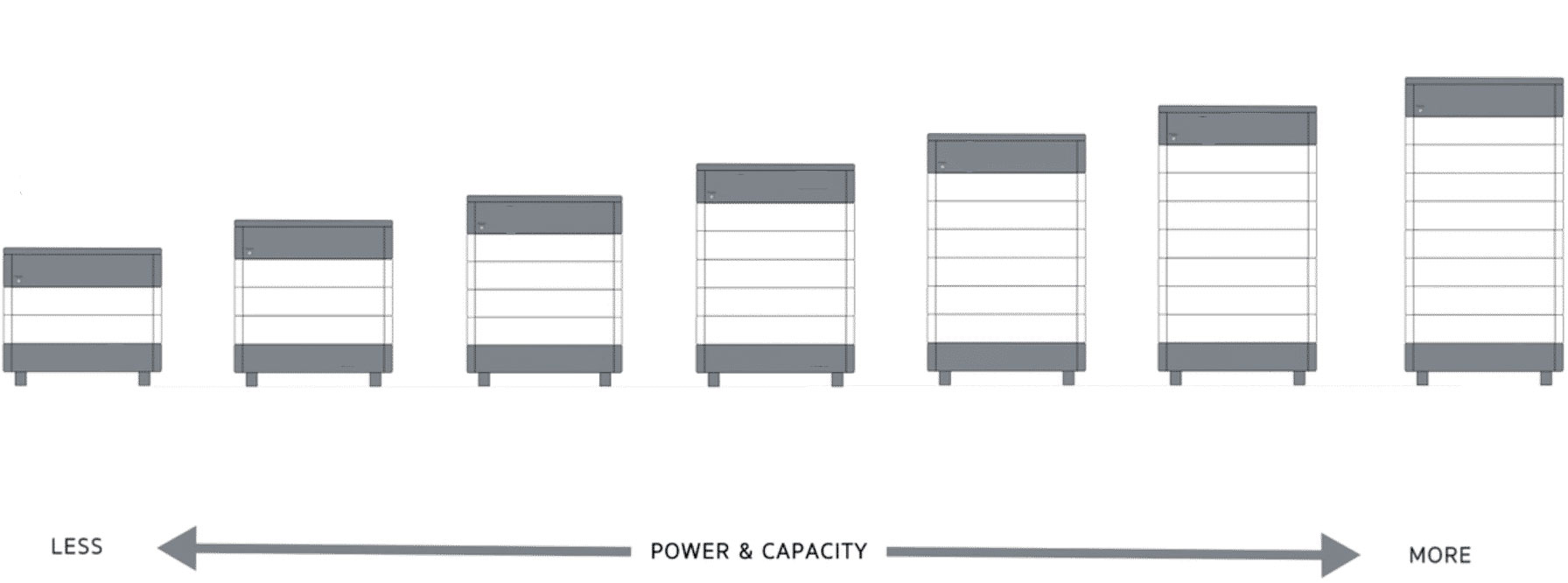
الغوص أعمق: احترام الحدود الهيكلية والسلامة
إليك كيفية تحديد ارتفاع التراص الآمن:
- تكديس مباشر: إذا تم تصميم وحدات البطارية بأغلفة متشابكة, دليل تثبيت المنتج هو دليلك المطلق. سيحدد الحد الأقصى لعدد الوحدات النمطية التي يمكن تكديسها على مستوى ما, سطح مستقر. يعتمد هذا الحد على السلامة الهيكلية للأغلفة واستقرار البرج الناتج.
- رف/خزانة التراص: هذه هي الطريقة الأكثر شيوعًا والمهنية لبناء مداخن أكبر.
- ارتفاع الرف (U-Space): يتم قياس الرفوف في "u" الوحدات (1ش = 1.75 بوصة). رف 24U يحتوي على مساحة عمودية أقل من رف 42U. يمكنك تكديس أكبر عدد ممكن من الوحدات النمطية, ترك مساحة كافية للتهوية.
- قدرة الوزن: هذا أمر بالغ الأهمية, في كثير من الأحيان التغاضي عن الحد. رف المعدات القياسي لديه قدرة محددة على وزن (على سبيل المثال, 500 كلغ, 1000 كلغ). يمكن أن تكون كل وحدة بطارية ثقيلة (على سبيل المثال, 40-50 كلغ). يجب أن تلتزم وزن جميع الوحدات المخططة والتأكد من عدم تجاوز الحد المعتمد من الحامل.
- الربط: من أجل السلامة, أي رف طويل أو ثقيل, خاصة في مكان مثل سنغافورة, يجب أن ترتكز بشكل آمن على الأرض (وأحيانًا الجدار) لمنع أي خطر من الإبقاء.
- اعتبارات حرارية: يتطلب تكديس البطاريات عالية في خزانة أيضًا التفكير في تبديد الحرارة. ترتفع الحرارة, لذلك يمكن للوحدات في الأعلى أن تصبح أكثر دفئًا. غالبًا ما يتم تصميم خزائن البطارية المهنية مع أنظمة التهوية أو المعجبين لضمان درجة حرارة متسقة طوال المكدس, وهو أمر حيوي لصحة البطارية في مناخنا الساخن.
في GYCX Solar, تتضمن عملية التثبيت لدينا تقييمًا شاملاً لهذه العوامل. نحن نضمن أن كل تخزين بطارية قابلة للتكديس يتم تثبيت النظام بطريقة ليست فقط صوتية كهربائيًا ولكن أيضًا مستقرة ميكانيكيًا وآمنة على المدى الطويل.
لذا, هل من الآمن تكديس البطاريات? نعم, عندما تستخدم الحديثة, وحدات بطارية قابلة للتكديس الأنظمة التي تم تصميمها على وجه التحديد لهذا الغرض وتثبيتها بشكل احترافي. التراص يسمح لك بإنشاء قوي, حل تخزين الطاقة القابل للتطوير. من خلال تغيير حجم مكدتك بشكل صحيح, يمكنك حتى تمديد عمرها التشغيلي.
إذا كنت مهتمًا باستكشاف مدى سلامة, قابل للتطوير, ونظام البطارية القابل للتكديس طويل الأمد يمكنه تشغيل منزلك أو عملك, لدى فريقنا في GYCX Solar الخبرة لإرشادك. اتصل بنا اليوم للحصول على استشارة مهنية!
سيساعدك فهم مفهوم LFP على مقارنة وفهم مفاهيم البيانات المتعلقة بالبطارية. سيساعدك هذا على اختيار المنتج الذي يناسب احتياجاتك من شركتنا. ↩
